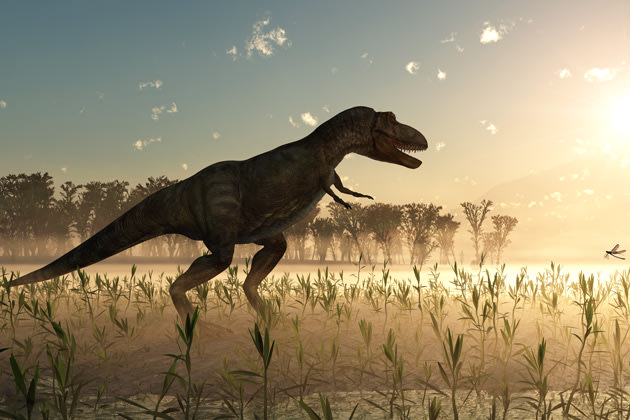
It seems that dinosaurs weren’t the only scary monsters of the Jurassic period as newly-discovered fossils reveal giant blood-sucking fleas afflicted the prehistoric world
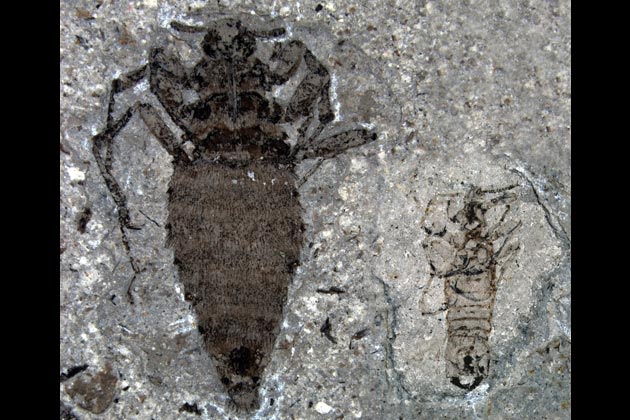
Fossils discovered in China have revealed the existence of giant blood-sucking fleas dating back to the mid-Jurassic era, when dinosaurs still lived on Earth, according to a report published Thursday on the website of the scientific journal Nature.The fossils date back as far as 165 million years, making them the oldest known evidence of fleas, according to Huang Diying, a scientist conducting research on the fossils
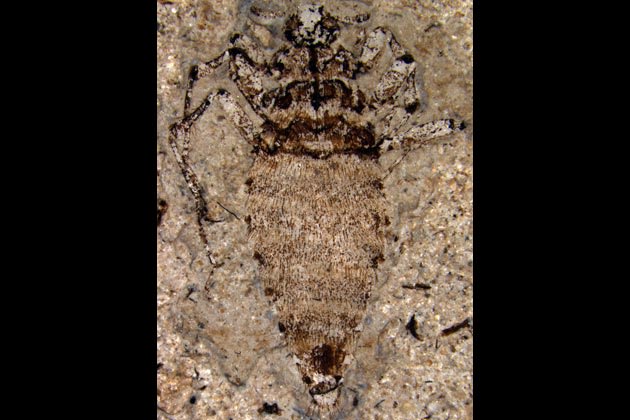 Huang is a fellow with the Nanjing Institute of Geology and Palaeontology under the Chinese Academy of Sciences. He led a study of the nine fossils, reported Xinhua.He said the ancient fleas were as long as 2 cm, while modern fleas are typically 1 to 3 mm long
Huang is a fellow with the Nanjing Institute of Geology and Palaeontology under the Chinese Academy of Sciences. He led a study of the nine fossils, reported Xinhua.He said the ancient fleas were as long as 2 cm, while modern fleas are typically 1 to 3 mm long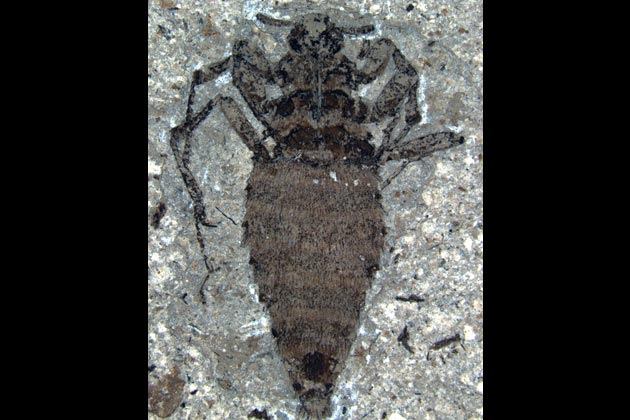
Ancient fleas had stiff bristles, strong claws and longer blood siphons, allowing them to suck blood from dinosaurs," Huang said. He said ancient fleas did not have the powerful hind legs seen on modern fleas, although their flat bodies made it easy for them to latch onto a variety of animals
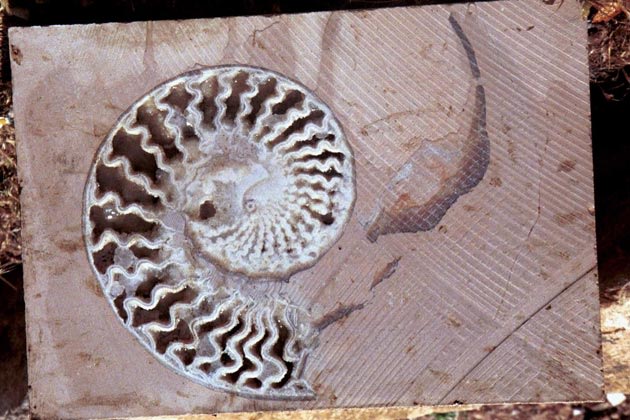
Fossil of an ammonite.
Perhaps the most popular fossil, the ammonites lived in the seas about 240 - 65 million years ago. They are believed to have faced extinction along with the dinosaurs. Ammonites were cephalopods, the existing relatives of our times being the squid, nautilus, octopus and cuttlefish. They were of various sizes ranging from a few centimeters of diameter up to two meters in diameter
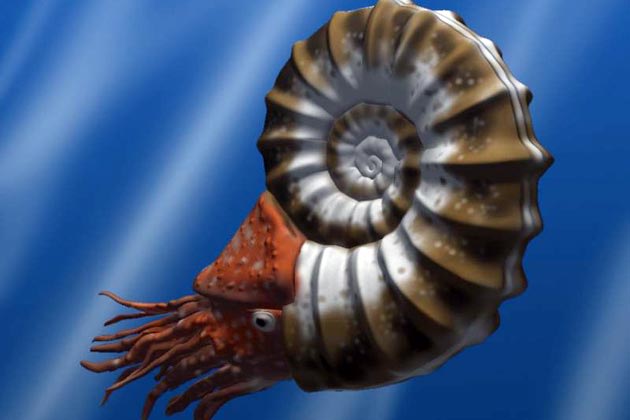
Artist’s impression of the ammonite
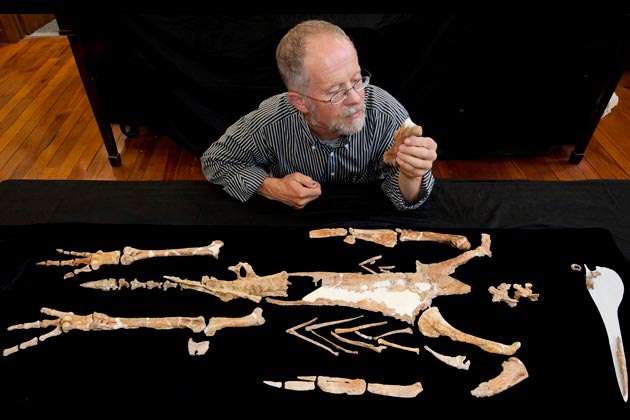
Prof. Ewan Fordyce, New Zealand’s University of Otago, examines a skeleton of a giant penguin that scientists have named Kairuku, estimated to have lived 26 million years ago—a time when most of New Zealand was under water. Prof. Fordyce found the Kairuku fossils 35 years ago. He persistently worked with Dan Ksepka of North Carolina State University, and created a full skeleton with pieces from more than three specimens. Kaikuru was 1.3 metres tall and weighed about 60 kg. i.e. 40 percent larger than the biggest of living penguins. Kaikuru in Maori language means ‘diver who returns with food
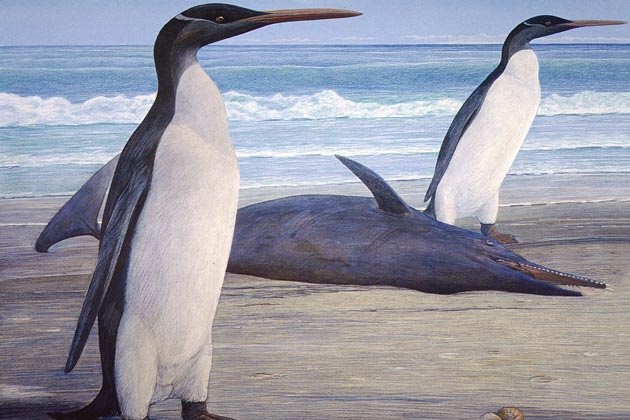
Kaikuru penguins moving ashore past a stranded Waipatia dolphin, as portrayed by Chris Gaskin of University of Otago’s geology museum
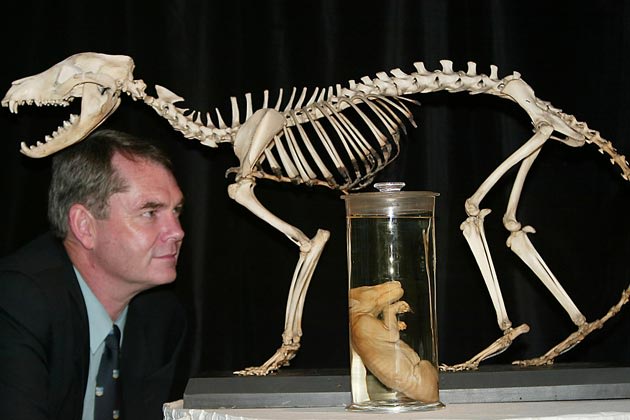
Skeleton of a Tasmanian tiger (Thylacine), which was declared extinct in 1936, and a 130-year-old thylacine female pup specimen preserved in ethanol. A team of scientists led by Professor Mike Archer of the Australian Museum in Sydney (seen with the fossils) have successfully replicated DNA from the pup specimen. The team now plans to recreate the extinct species within a decade
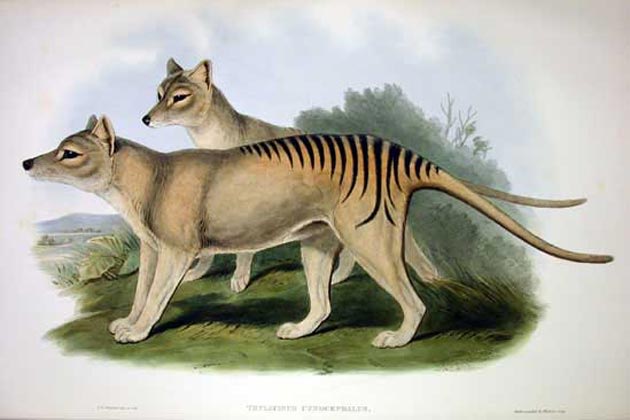
Artist’s impression of the Tasmanian tiger
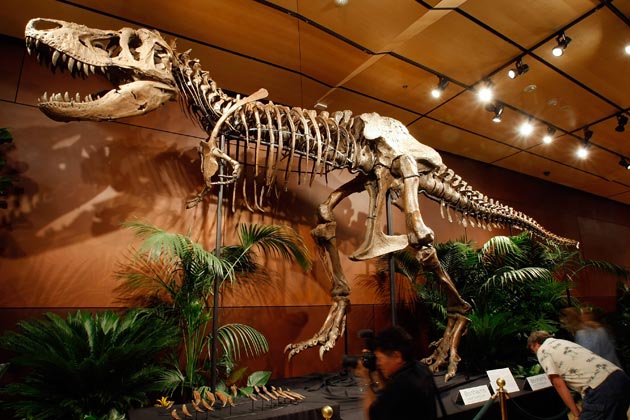
The 66-million-year-old Tyrannosaurus rex skeleton dubbed ‘Samson’. The 40-foot-long female dinosaur fossil, excavated in South Dakota in 1992 contains about 170 bones and is said to be the third most complete T rex skeleton ever unearthed
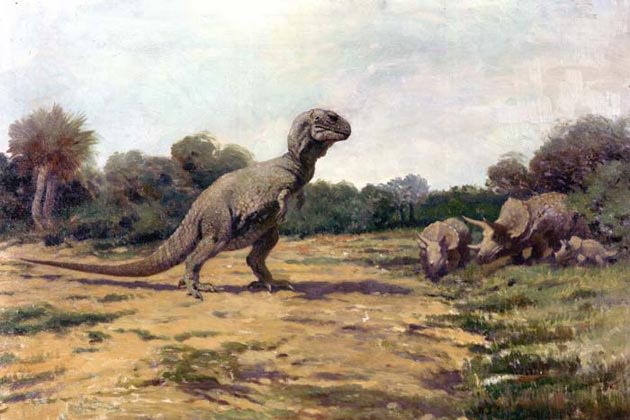
Artist’s impression of the T rex strolling along the rocky terrains of prehistoric times
